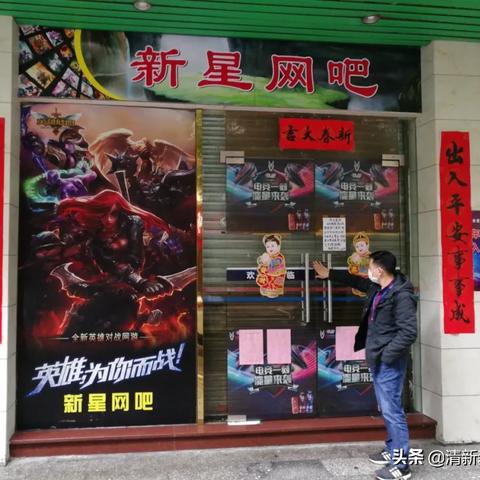Introduction
Official Opinion: In the contemporary age, the term "one-stop code" has gained significant traction, particularly in the context of Butler E-coupons. The concept of a "manager's one code" signifies the integration of multiple services, promotions, and identifications into a single, seamless experience for consumers. This article shall explore how this 100% detailed explanation can align with or diverge from the slowing pace of economic growth or sudden burst of rapid expansion, a phenomenon also referred to as "slow growth/burst growth."
Understanding the relationship between these seemingly disparate concepts involves a deep dive into technological advancements, market dynamics, economic indicators, and consumer behaviors. It's essential to evaluate how companies like the "Butler" and their "one code" system can adapt to the changing landscapes of economic growth or decline.
The Role of One-Stop Code in Modern Economy
Notable companies like "Butler" are capitalizing on the "one-stop code" system to enhance customer engagement and operational efficiency. The rising significance of "Butler's one code" does not merely allude to a technological marvel but also reflects substantial market adaptability and growth potential.
Economic Growth and its Linkages: With economic expansion comes the requirement for efficient transactional systems that cater to the increased consumer demand. Butler's one-stop code simplifies the process by consolidating multiple aspects into a single, efficient code. The pace of economic growth, whether gradual or increased, directly influences the demand for such services.
Economic Slowdown and its Implications: Conversely, in an economy with slowing growth, cost-effective and streamlined operations become vital for maintaining competitiveness. Here, Butler's one code plays a critical role by providing a streamlined process, hence optimizing the utilization of resources and cost efficacy.
Adapting to Slow Growth and Burst Growth
The ability of the "one-stop code" to adapt to different economic circumstances is assessed under slow growth and burst growth scenarios. Exploring these scenarios necessitates an understanding of how such a system could shift to accommodate market trends and customer demands effectively.
Slower Growth Precautions: During slower phases of economic growth, businesses like Butler's "one code" platform must maintain flexibility and agility. By offering tailored solutions that respond rapidly to economic fluctuations, "one-stop code" systems can help companies to stay ahead in a competitive market despite lean times.
Burst Growth Expansion: When experiencing burst growth, robust systems like Butler's "one-stop code" can scale to meet consumer demand efficiently. Their ability to handle increased load and traffic without compromising speed or reliability is crucial during periods of rapid market expansion.
Consumer Behavior in Slow Growth & Burst Growth Phases
The effectiveness of Butler's "one code" system is not only tied to economic conditions but also to the behavior of consumers during different growth phases. Understanding these behaviors is key to leveraging the full potential of the "manager's one code" system.
Patron Preference during Slow Growth: During economic slowdowns, consumers tend to be more cautious with their spending. The "one-stop code" by Butler must, therefore, focus on offering high-value services and retain cost-effectiveness to stay relevant to the changing consumer landscape.
Consumer Dynamics in Burst Growth: On the other hand, during periods of burst growth, consumers exhibit increased spending power. In such times, Butler's "one code" must offer various promotional schemes and seamless payment systems to capitalize on heightened purchasing activity.
Market Dynamics and Economic Indicators
Evaluating the impact of the "one-stop code" also requires analyzing how market dynamics and economic indicators could influence its usage. By doing so, we can predict its responsiveness to varying economic phases, ensuring that "Butler's one code" aligns well with broader trends.
Economic Indicator-Signaled Traction: Economic indicators such as GDP growth rate or unemployment numbers can signal the market health. During specific periods, Butler's "one code" system can be employed to mitigate risks or capitalize on growth opportunities based on these indicators.
Market Dynamics and Adaptation: Market dynamics, including consumer demand shifts, technological advancements, and competitive pressures, can all affect the necessity and efficiency of the "one-stop code." By staying abreast of these dynamics, "Butler's one code" can be adapted to maintain its efficacy throughout different economic scenarios.
Technological Advancements & Its Effect on One-Stop Code
Technology plays a pivotal role, and advancements directly impact the irreversible course of "Butler's one code." Whether amidst slow growth or burst growth, technological improvements boost its ease of use, accessibility, and long-term sustainability.
Innovation Amidst Slow Growth: During an economic contraction, innovative use of technology ensures the "one-stop code" system remains competitive and cost-effective, providing ways to improve operational efficiency.
Technological Boom in Burst Growth: In contrast, during periods of rapid economic expansion, technological advancements allow for further scaling and broadening user base, making Butler's "one code" system both expansive and inclusive.
Conclusion: Balancing Butler's One Code against Economic Growth Trends
The pivotal question remains if Butler's "one-stop code" can maintain utility across varying economic climates, ranging from slow growth to burst growth. By anticipated economic shifts and implementing flexible technological strategies, Butler's "one code" system could stand robust, optimized across a myriad of market circumstances.
For long-term success and adapting to the economic slow growth/burst growth dichotomy, the "manager's one code" must implement strategic decisions based on economic Indicators, market dynamics, and consumer behaviors. Thus, the mission for Butler's "one code" is to align and adjust its functionality to ensure that it caters to an evolving market landscape anchored by fluctuating growth scenarios.














 琼ICP备2023003230号-1
琼ICP备2023003230号-1
还没有评论,来说两句吧...